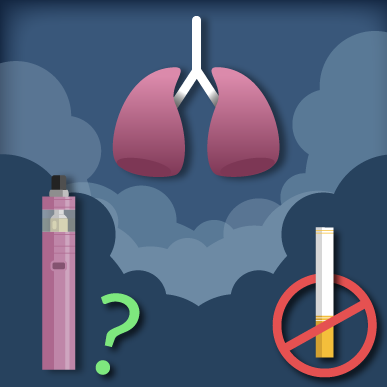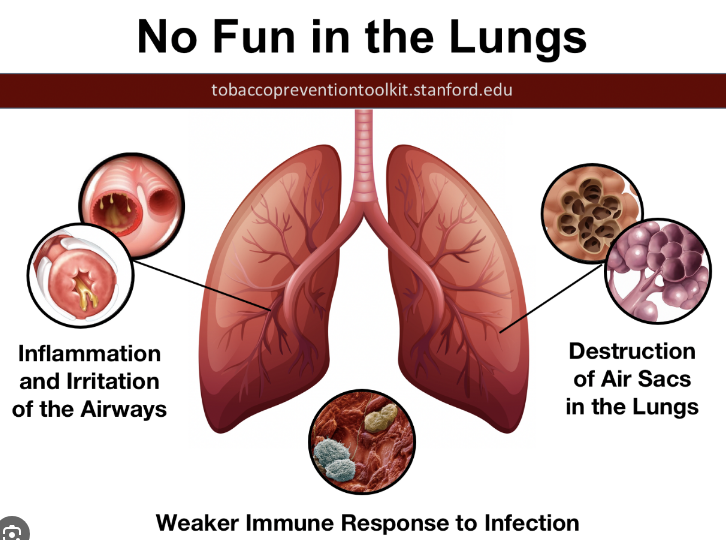Yes, lungs can begin to heal after quitting vaping, showing improved function and reduced irritation within a few months.
Understanding Vaping
Vaping has rapidly emerged as a popular alternative to traditional smoking, touted by many as a less harmful option. However, the impact of vaping on lung health remains a topic of intense research and debate. Understanding the components of vape products and how they affect the lungs is crucial for anyone considering or currently using these devices.
Components of Vape Products
Vape products, also known as e-cigarettes, are devices designed to deliver nicotine, flavorings, and other chemicals in the form of an aerosol, which users inhale. The main components of vape products include:
- Liquid solution (e-liquid or vape juice): Typically contains nicotine, propylene glycol (PG) or vegetable glycerin (VG), and flavorings.
- Heating element (atomizer): Vaporizes the liquid solution, turning it into an aerosol.
- Power source (usually a battery): Provides the energy required to heat the atomizer.
- Cartridge or tank: Holds the e-liquid.
Vape products come in various shapes, sizes, and power capacities, directly influencing the volume of vapor produced and, consequently, the degree of exposure to harmful substances.
How Vaping Affects the Lungs
Vaping introduces a mix of chemicals into the lungs, some of which can have harmful effects. The primary concerns include:
- Irritation and inflammation: Propylene glycol and vegetable glycerin, the base fluids in e-liquids, can cause irritation to the respiratory tract, leading to symptoms like coughing and sore throat.
- Exposure to toxic substances: E-liquids contain nicotine, flavorings, and other additives that may become toxic when heated and inhaled. For instance, some flavorings contain diacetyl, a chemical linked to serious lung disease.
- Oxidative stress and immune responses: Studies suggest that vaping can increase oxidative stress and elicit abnormal immune responses in the lung, contributing to lung damage and decreased ability to fight off infections.
Comparisons between vaping and smoking cigarettes reveal that while vaping may expose users to fewer toxicants than traditional cigarettes, it does not mean vaping is safe. For example, cigarette smoke contains over 7,000 chemicals, many of which are toxic, while e-cigarette aerosol contains fewer harmful chemicals. However, the long-term health impacts of inhaling these fewer chemicals through vaping are still under investigation.
The concentration of nicotine, a highly addictive substance, can vary widely in e-liquids. Devices with higher power output can vaporize more e-liquid and deliver nicotine more efficiently, potentially increasing addiction and exposure to toxic substances.

Immediate Effects of Vaping on Lungs
Vaping, often marketed as a safer alternative to traditional smoking, has a unique set of effects on the lungs. Initial symptoms and changes can provide insight into how these practices affect respiratory health.
Short-term Respiratory Symptoms
Vaping can cause a variety of short-term respiratory symptoms. Users often report an immediate sensation of throat irritation and dry mouth. More concerning are the instances of acute lung injury associated with certain vaping products, particularly those containing vitamin E acetate, a thickening agent found in some THC-containing e-liquids. This compound is linked to e-cigarette or vaping product use-associated lung injury (EVALI), which has symptoms including cough, shortness of breath, and chest pain. The CDC reports that as of February 2020, there were 2,807 hospitalization cases or deaths attributed to EVALI. Importantly, most people affected used vape products containing THC.
Comparative Analysis: Vaping vs. Smoking
To understand the relative impact of vaping compared to smoking, it is essential to consider both practices’ immediate effects on the lungs. Here is a detailed comparison based on reported symptoms and scientific findings:
| Aspect | Vaping | Smoking |
|---|---|---|
| Respiratory Symptoms | Throat irritation, dry mouth, cough, shortness of breath, potential for acute lung injury. | Persistent cough, increased phlegm production, shortness of breath, acute lung injury risk. |
| Chemical Exposure | Nicotine (varies), propylene glycol, vegetable glycerin, flavorants, potential toxins. | Nicotine, tar, carbon monoxide, hydrogen cyanide, formaldehyde, lead, arsenic, ammonia. |
| Risk of EVALI | High, especially with THC-containing products. | No reported cases linked directly to traditional smoking. |
| Oxidative Stress | Lower levels compared to smoking, but still present due to flavoring chemicals and nicotine. | Higher levels due to the combustion of tobacco, leading to significant oxidative stress. |
| Inflammatory Response | Present, with some studies showing an increase in inflammatory markers. | More pronounced, with both immediate and long-term inflammation affecting lung tissue. |
Key Findings:
- Both vaping and smoking introduce substances into the lungs that can cause irritation and lead to short-term respiratory symptoms. However, the types and levels of chemicals involved differ significantly.
- Vaping is associated with a unique risk for EVALI, particularly from THC-containing products, which is not a concern with traditional cigarettes.
- Smoking tobacco involves combustion, which releases a broader range of harmful chemicals, resulting in greater oxidative stress and inflammation in the lungs compared to vaping.
Understanding these distinctions is crucial for individuals making informed choices about their respiratory health. While neither vaping nor smoking is without risk, the immediate effects on the lungs suggest that the nature and severity of potential harm can vary significantly between these two practices.
Long-term Risks of Vaping
The burgeoning popularity of vaping has raised significant concerns regarding its long-term impact on health, particularly concerning the lungs. Extensive research is ongoing, but early findings suggest a correlation between vaping and several chronic conditions.
Chronic Respiratory Conditions
Vaping introduces a variety of chemicals into the lungs, including nicotine, flavoring agents, and substances like propylene glycol and vegetable glycerin. Over time, these substances can cause irritation and damage to lung tissue. Studies have shown that individuals who vape may experience a heightened risk of developing chronic obstructive pulmonary disease (COPD), asthma, and other respiratory ailments.
A significant concern is the effect of vaping on lung function. A study published in the “Journal of the American Medical Association” found that individuals who use e-cigarettes exhibited reduced lung function and increased resistance in the airways, indicators of compromised respiratory health. Moreover, the presence of diacetyl, a chemical used in many flavorings for vape products, has been linked to bronchiolitis obliterans, also known as “popcorn lung,” a condition that damages the lung’s smallest airways and leads to coughing and shortness of breath.
Potential for Lung Disease
Beyond the immediate irritation and respiratory symptoms, long-term vaping poses a potential risk for lung diseases, including interstitial lung disease and pneumonitis. These conditions result from inflammation of the lung tissue, leading to scarring and reduced lung capacity. Cases of lipoid pneumonia have also been reported, where fatty substances found in vape liquids accumulate in the lungs, causing severe inflammation.
The comparative analysis with smoking tobacco shows that while cigarette smoke contains more known carcinogens and toxic substances, the long-term effects of vaping are not entirely benign. The lack of combustion in vaping does reduce exposure to certain toxins present in traditional cigarettes. However, the inhalation of vaporized chemicals over a prolonged period is not without risk, and the full spectrum of potential lung diseases from vaping remains to be fully understood.
Key insights indicate that the risk of developing chronic respiratory conditions and lung diseases from vaping cannot be ignored. The impact on lung health may vary based on factors such as the type of device, the substances vaped, and individual user behavior, but the evidence points to a significant potential for harm. As vaping continues to be studied, understanding the nuances of its effects on the lungs is critical for public health and individual decision-making regarding tobacco and nicotine product use.

Healing Process
The impact of vaping on lung health has led many to question whether the lungs can recover after quitting. The good news is that the body possesses a remarkable ability to heal itself, and this includes the lungs after cessation of vaping.
Can the Lungs Heal After Quitting Vaping?
The lungs can begin to heal themselves as soon as you stop vaping. This process varies from person to person, depending on several factors such as the duration and intensity of vaping, the presence of pre-existing lung conditions, and overall health. Within just a few days of quitting, you might notice a decrease in coughing and shortness of breath. Over time, lung function can improve as the cilia, tiny hair-like structures that remove mucus and debris from the lungs, begin to recover. This regeneration can lead to fewer respiratory infections and improved lung capacity.
A study in the “Journal of the American Medical Association” highlighted that former smokers who transitioned to vaping and eventually quit altogether showed improved respiratory function and reduced exposure to harmful substances compared to those who continued smoking or vaping. This evidence supports the notion that quitting vaping can lead to meaningful improvements in lung health.
Factors Influencing Lung Recovery
Several key factors influence the lung’s ability to recover after quitting vaping:
- Duration and Intensity of Vaping: Long-term and heavy vapers may have more significant lung damage, which can take longer to heal.
- Age: Younger individuals typically have a faster recovery rate due to the higher resilience and regenerative capacity of their tissues.
- Pre-existing Lung Conditions: Individuals with conditions like asthma or COPD may experience a slower recovery process.
- Overall Health and Lifestyle Choices: Engaging in activities that promote lung health, such as regular exercise, eating a healthy diet, and avoiding exposure to other lung irritants, can significantly enhance the healing process.
Quitting vaping is the first step in a journey towards better lung health. The body’s ability to heal from the effects of vaping is encouraging, but it requires time, patience, and, most importantly, cessation of vaping. For those who have vaped for an extended period, consulting with a healthcare professional for a personalized recovery plan is advisable. Regular check-ups can help monitor lung health and address any complications early in the recovery process.